To understand and appreciate Egyptian art one must look at the beginnings of art in Egypt and how it developed, for in that development lay the roots of many ideas and techniques. This resources explores this development.
The Paleolithic beginnings
One can be forgiven for thinking that Egyptian art is all about colour, strange statues, temples and mummies, but its art starts 15,000 years ago in the Upper Palaeolithic period.
- What types of artefacts have been found that shows the presence of art in Egypt?
- Was the rock art found in caves or out in the open?
- Were they painted on to the rock?
A number of Palaeolithic sites of rock art and etchings have been discovered. Beside the rock drawings there is evidence of simple weaving of threads and wood.
One set of this rock art was discovered in 1962 at Qurta on the Kom Ombo plain, South Egypt, by archaeologists from the University of Toronto, Canada. The site was rediscovered in 2005. Curiously these are similar in age and style to the Palaeolithic cave art in Lascaux, France, and Altamira, Spain. More examples of rock art were discovered in 2004 at Abu Tanqura Bahari at Al-Hosh, about 10 kilometres to the north and on the opposite bank of the river and in 2007 in Upper Egypt, Al-Ahram.
- What were the subjects of the Egyptian rock art?
The engravings found in 1962 on the Kom Ombo plain consist of more than 160 figures and depict mostly wild bulls, the biggest nearly two metres wide. They were chiselled into several sandstone cliff faces at the village of Qurta, about 400 miles (640 kilometres) south of Cairo. All the rock art images are very darkly coloured and seem to be covered by a varnish. Most of the images also have traces of intensive weathering through wind or Aeolian abrasion and water run-off.
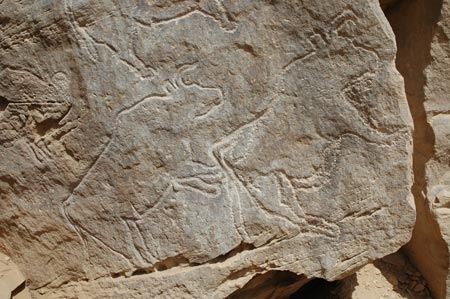
Figure 1: Rock drawing of cattle. © Dirk Huyge, RMAH, Brussels
The cattle are drawn and painted in a naturalistic style quite different from those shown in cattle representations of the later Classical period. There are illustrations of hippopotami, fish, and birds and interestingly human figures can be seen on the surface of some of the rocks. This could mean the Egyptian people of this time were using art to venerate animals, to instruct young on hunting or to record their environment.
Understanding Egyptian Palaeolithic art
To date the drawings they were first examined for patination and weathering. This suggests these drawings are extremely old. They were then examined for lichens and organic grime called “varnish rind”, which could be radiocarbon dated or subjected to uranium series dating. The dates from these tests show them to be around 15,000 years old. Finding rock art from this period and in this style leaves us with a big question:
- Were the people in Western Europe and those in Southern Egypt producing almost identical artwork at the same time in history?
The art is so alike it reflects a similar mentality, maybe a parallel stage of cultural development.
- Was it because the people were confronted with similar conditions and this lead to a similar style of creativity?
Egypt lies on the route from the Rift Valley of Africa up to the Arabian Peninsula, which was the route of modern man from their evolutionary beginnings in Africa, so with those questions in mind it is reasonable to speculate that there could have been similarities in the development of culture.
How did they produce the rock art?
These Egyptian Palaeolithic artists used a special artistic technique to engrave and paint their rock images. They hammered and incised the solid surface to transform it into a fine animal, a bird or a scene from the nature around them. In some cases the figures are executed almost in bas-relief. They made use of natural fissures, cracks, curves, arches and brows of the rocks, and integrated them into the art images. The fauna of these Late Palaeolithic sites on the Kom Ombo plain suggest a culture of hunters and fishermen.
Even though there are drawings that show superimpositions all appear to be of the same phase and the animals all appear to be single animals and of wild, not domesticated, species. Quite often the heads of the cattle are represented either upwards or downwards as if they were being represented in motion.
Ancient Egypt was a gift of the Nile. The annual flooding, known as the inundation, brought life to the peoples settled along its banks. Therefore it would be reasonable to consider life on the river would figure high in the beliefs and consequently in the art of the people. Hunting and fishing predominated and so the people represented this in their art.
What is clear is that Egyptian art is evident in the Palaeolithic Period, well before the Classical Egyptians, and that the forces driving this art lie in the environment.
Palaeolithic art develops into the Badarian culture
After the Palaeolithic period the next art form is from the Badarian, an agrarian culture. They provide us with the earliest direct evidence of the development of agriculture in Upper Egypt and flourished between 4400 and 4000 BCE. It illustrates a move away from dependence upon hunting and fishing that was first identified in El-Badari, Asyut (Figure 2), where about forty settlements and six hundred graves were located.
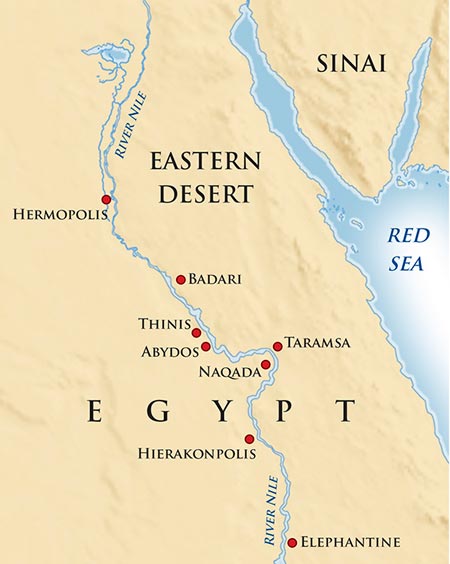
Figure 2: Map of the Bardari culture. Peter Bull
The Badarian economy was based mostly on agriculture, fishing and animal husbandry and that is seen in most of the tools found as grave goods. These include scrapers, perforators, axes, sickles and concave-base arrowheads many of which were functional and show little decoration.
- Were the Palaeolithic peoples art similar to the succeeding Badarian People?
Badarian art and craft
Badarian artefacts found were simple handmade pots made from Nile silt, containing small quantities of sand that could have been added deliberately. The pots are decorated with ripples or small waves; probably the result of combing and polishing the clay. They are fine pieces of work. The pots were made using mud coils stacked on top of each other and polished to form smooth walls. This fashioned walls that are the thinnest seen in any of the Egyptian period. Potters stabilised their pots by adding a ridge on the base to make carinated pots. This allowed the round pot to stand upright (see Figure 3).
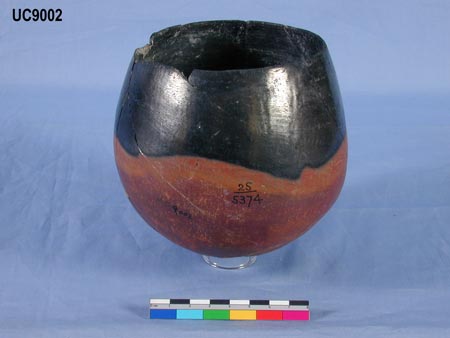
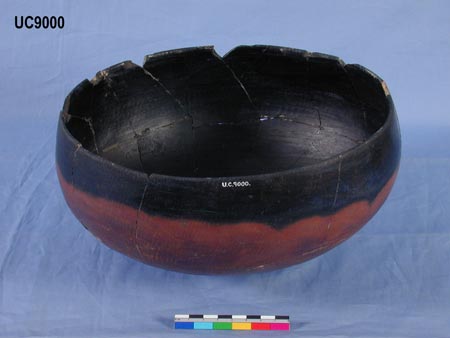
Figure 3: Badarian pottery about 4500 BCE. Image courtesy of the Petrie Museum of Egyptian Archaeology
The pots were probably fired in open pits since no kilns have been found. Some pots show the use of a brown-black slip to the top of the pot, probably achieved by placing the top of the pot upside down into the embers of a fire to produce the reducing conditions. All this shows a methodical approach to pottery and the development of an art and craft.
- Was pottery the only forms of artefacts found?
Other things found in the graves include such things as hairpins, combs, bracelets, beads of ivory and bone and female statuettes made of ivory or clay. On the bodies were found amulets some with animal heads, like gazelle and hippopotami.
- Could the decoration be an indication of animal veneration, or a desire for protection from danger?
- Is the art playing a role in representing those beliefs?
The dead were placed in the foetal position on woven mats and buried in pits with grave goods laid around them but in no specific pattern. Their heads were generally laid to the South, looking west towards the setting sun.
- Could this indicate a sense of rebirth in their religion?
Minerals, pigments and metals
On some male bodies there have been found girdles made of steatite (soapstone). Steatite is a talc-schist; a type of metamorphic rock largely composed of the mineral talc and rich in magnesium. It occurs in areas where tectonic plates are subducted (where a tectonic plate slides under another). The heat, pressure and influx of fluids change the rocks but without melting them. Such an area lies along the Eastern Desert so there was active collection of special rocks there, or trading for them.
There is evidence of pigment grinding such as the green mineral malachite possibly for cosmetic use. This is shown in the number of greywacke rectangular or oval palettes (used for mixing pigments and oils) found in the grave goods.
Also found in the graves were Red Sea seashells, slates, wood and hammered copper showing an emergent metal craft. The nearest copper ores of green malachite are in the Eastern Desert and the Sinai so we can deduce the copper, some woods, slate and seashells can be indicators of contact with other cultures and possibly trading.
There are also reports of small beads of turquoise; a rare mineral that could point to turquoise being used as jewellery. Turquoise is an opaque, blue-to-green mineral that is a hydrous phosphate of copper and aluminium, (CuAl6(PO4)4(OH)8·4H2O). It is rare and valuable and has been prized as a gem and ornamental stone for thousands of years owing to its unique hue.
- Does trading indicate that the Badarian society was developing a culture?
Developing Egyptian society
From the grave evidence there appears to have been social stratification in that the wealthier seem to have been buried in a separate part of the burial ground and the style and type of goods indicates their wealth. Egyptian society was developing a structure that could be based upon wealth and goods were becoming a display of that wealth through the decoration displayed on them.
What we see here is the beginnings of the development of a more sophisticated society where art is beginning to play a part in more than a belief form. It is being used as a mark of identity and belonging to a particular section of society.
Badarian to the Naqada I Culture
During the Neolithic Period there was a change in the cultures of Egypt. The Naqada (4000-2920 BCE) culture seems to have overlapped with the Badarian culture and developed some parallels but also differences.
In the Naqada culture we find art in varied forms and to distinguish the developments it is divided into three periods; Naqada I (Amratian 4000-3500 BCE), Naqada II (Gerzean 3500-3100 BCE) and Naqada III (3100-2920 BCE).
- Were there differences in the art from each of the three Naqada cultures?
The Naqada I Amratian culture was an agrarian one but different from the Badarian in that they mastered the use of artificial irrigation so important in the Nile river valley. They no longer needed to hunt for food. They grew and harvested crops and kept cattle, but more important they moved from small settlements and started living in towns, creating areas of higher population density.
- Would this indicate the need for greater social stratification and perhaps a hierarchy?
Grave goods
The burial rites continued to be similar to those of the Badarian culture with the range of grave goods being greater. The burials indicate more social diversity and the grave goods are designed to indicate the identity of the deceased. They were mostly single burials but there are some multiple burials particularly mother and infant. There is the continued use of the funerary mat and the head is often laid on a pillow.
Many of the skeletal remains have the remains of a fabric loincloth but some have an animal hide loincloth trimmed with fabric. This could indicate a developing fashion form linked to some social diversity in the population but it is not possible to determine any hierarchy.
There are funerary statuettes of both men and women but interestingly they are rarely shown seated. They are generally standing with an emphasis on the sexual characteristics. When found it is generally as a single or group of two statuettes rarely more than three.
The Naqada culture developed their artistic tendencies, creating new styles of pottery and more intricate carving. The black red pottery show signs of high polish and over time the ripple or wave pattern seen in the Badarian disappeared replaced by white designs depicting animals and vegetation alongside geometric shapes see Figure 4 below.

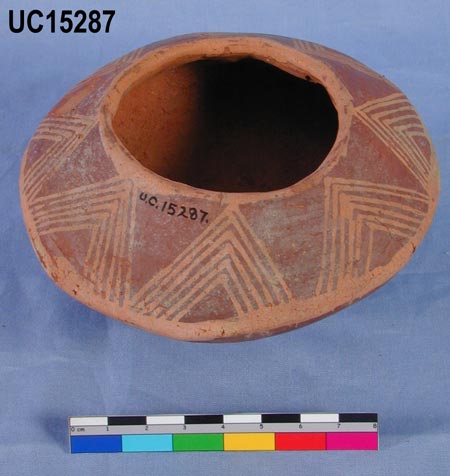
Figure 4: Naqada I pots. Image courtesy of the Petrie Museum of Egyptian Archaeology, UCL, UC9524 and UC15287.
Palettes
Many stones have been found that had been used for grinding pigments and these developed into more formal objects called palettes. Many palettes have been found in a rhomboid shape (see Figure 5) and some animal and shield-shaped palettes have been recovered that show a clear link in development towards the ceremonial palettes of the early dynastic period.
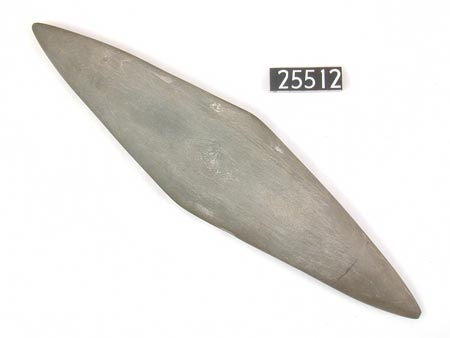
Figure 5: Rhomboid palette. Image courtesy of the Petrie Museum of Egyptian Archaeology, UCL, UC25512.
Although hunting was no long important for food it was frequently found engraved or carved on the palettes. Another important depiction is the victorious warrior. This seems to indicate that hunting and organised war parties were not a normal part of the everyday life but had become a part of the culture of status.
The fauna represented on the hunting palettes and containers tended to reflect the importance of the Nile to the people in that there were more river creatures shown such as crocodiles, hippopotami, flamingos and lizards. As well as cattle, land animals were also represented such as giraffes, gazelles and scorpions. Human forms were drawn but often as schematics with small features.
- What makes the Naqada culture so different from the Badarian?
Working with metals, stones and minerals
The Naqada I developed their skills in metal-working, in particular copper. Copper and flint knives were found in the graves of high status Naqada I people as were disc-shaped hard stone mace heads. There are a high number of tools such as punches, needles, awls, combs, spoons and an ivory pot, stone vessels and several meteoritic iron beads. Some of these, especially the ivory combs, have been decorated with animal and human forms.
There was evidence of attempts at faience, where crushed quartz is mixed into a paste and shaped then coated with natron glazes coloured by metal oxides. Natron is a white to colourless mineral, a naturally occurring mixture of sodium carbonate decahydrate (Na2CO3·10H2O) and about 17% sodium bicarbonate (NaHCO3) along with small quantities of sodium chloride and sodium sulfate.
Natron deposits are found in saline lake beds in arid environments and were harvested directly as a salt mixture from dry lake beds in Ancient Egypt. It was used as a cleaning material and blended with oil to form an early type of soap. The mineral was used as an early antiseptic for wounds and minor cuts. Natron can be used to dry and preserve fish and meat and later was later used in the mummification processes.
Trading
The Naqada I traded with the people in Syria/Palestine, Nubia, Mesopotamia and Asia as demonstrated by the finding of the blue mineral lapis lazuli in the form of beads. This lapis came from its only known prehistoric source Badakshan, in north-eastern Afghanistan.
The introduction of cylindrical seals (a typically Mesopotamian device) showed that their culture was influenced by their neighbours. Significantly the religion seems to have become more abstract and the familiar Egyptian gods, Hathor, Ra and Horus, date to this period.
What is becoming clear is that in the Naqada I period there were urban centres that brought together the workshops, craftsmen, and the facilities for commercial exchange; the organisation of craft to create a society with an art culture that is being used for religious and fashion purposes.
Naqada II
During the Naqada II (3500-3100 BCE) there were more interesting developments in art and craft. Geographically the north (known as Lower Egypt) and south (known as Upper Egypt) remained separate and developed independently. The south displayed very distinctive artistic forms, specialised crafts and religious belief.
- What marks the Naqada II culture as different from Naqada I?
The differences can be seen in the burial goods. In the British Museum we find Ginger (Figure 6), a Predynastic man from the Naqada II Period (3200 BCE). Ginger was buried in the sand with some of his favourite possessions and the dry conditions of the desert mummified his body. He is surrounded by a range of different pots and a palette.
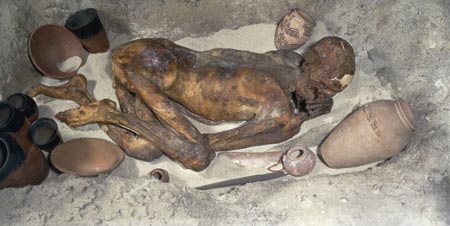
Figure 6: ’Ginger’ Gebelein Man. © The Trustees of the British Museum
It is in the burial and funerary practises that the changes can be seen indicating changes in the religious beliefs. There is an increased number and range of grave goods, many decorated and they are now laid out in formal patterns. Later, these burial rites included starting to wrap the body and much later the use of coffins.
- Does this display a stronger belief in an afterlife, specific burial rituals and the need of the deceased for these items in that afterlife?
The people continued to live in settlements but the towns became bigger surrounded by smaller villages and within the towns there was consolidation of resources and zones of people with particular skills. Specialised crafts workers were employed in workshops to produce items for the use of an increasingly small section of society. Art is clearly taking on two roles; art for religious purposes perhaps with a ritual and art for status.
There are new types of pottery using marl, a friable or crumbly earthy deposit consisting of clay and calcium carbonate. New decorative styles were also used such as light coloured vessels painted in red with a standard organised decoration of both geometric and figurative images, as seen in Figure 7 below.
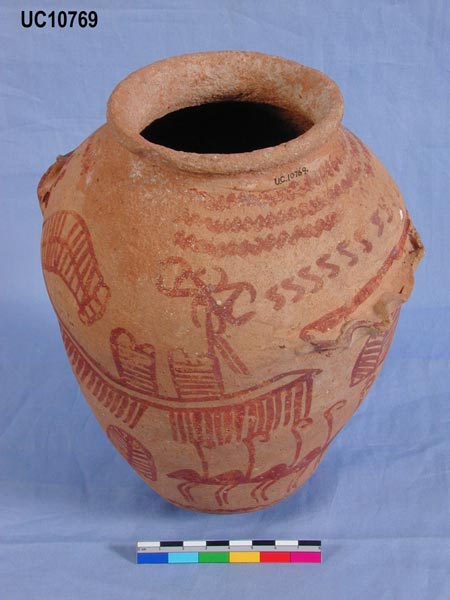
Figure 7: Decorated pots. Image courtesy of the Petrie Museum of Egyptian Archaeology, UCL, UC10769.
There are also examples of carved statuettes of human figures from the Naqada I and II periods, but many have little provenance so it is difficult to confirm their date.
Decorative palettes
The Naqada II continues to use palettes but the decoration becomes more elaborate and one of the most spectacular features is the increased number of cosmetic palettes that have been found in tombs.
- What made the Naqada II palettes different from Naqada I?
The Naqada I palettes were generally rhomboid pieces of shale or schist used to grind pigments before application to the body. In the Naqada II period they became more sophisticated but simple in design such as either a fish or a double headed Bird, Figure 8 below.
- Is this an indication of a more ritual rather than cosmetic use of the palette?


Figure 8: Two examples of Naqada II cosmetic palettes. Image courtesy of the Petrie Museum of Egyptian Archaeology, UCL, UC4240 and UC4695.
There is the establishment of a well-defined copper industry (for the production of both tools and jewellery), with increased gold and silver working for jewellery.
This degree of change seems to indicate there has been an increased contact with other cultures and this can be seen in the range of pottery from Palestine and Mesopotamia. This reflects the growing complexity of the social structure, which is both more diversified and more hierarchical.
The Ancient Egyptian fascination with representation and art clearly date to this time. Although the character of expressive art has been changing from the Palaeolithic we can see the skills learnt are being built upon. It is to this time that some of the Dynastic themes were established like cattle and boat motifs, for example, and perhaps even the earliest precursors of hieroglyphic characters.
Predynastic art – Naqada III
It is conjectured the Naqada II developed into the Naqada III (3100-2920 BCE) and this formed the foundation of the Classical Egyptian art. It was also during this period that the unification of Upper and Lower Egypt into one state took place with named kings. Hence it is often referred to as Dynasty 0 or Proto-dynastic Period.
- Why is the Naqada III culture considered the most important for development of the Classical Egyptian art culture?
From Naqada III Egyptian art continued to develop but they never had a concept or word for art since the art was closely woven in with the religion.
Hieroglyphs
With unification Egyptian art was characterised by the development of stylised pictures as communication in the form of hieroglyphs, which were found on a number of different objects including palettes. On the Narmer Palette (31st century BCE), a significant archaeological find, we find one of the first graphical narratives in the form of a pictorial language. It tells a story with its two sides of raised relief decoration containing some of the earliest hieroglyphic inscriptions. It is carved from a single flat piece of soft dark grey-green siltstone (see Figure 9 below).
It is thought by many Egyptologists to show the unification of Upper and Lower Egypt under the king Narmer. On one side, the king is depicted with the bulbous White Crown of Upper (southern) Egypt (Smiting side), and the other side (Serpopard side) depicts the king wearing the level pointed Red Crown of Lower (northern) Egypt.
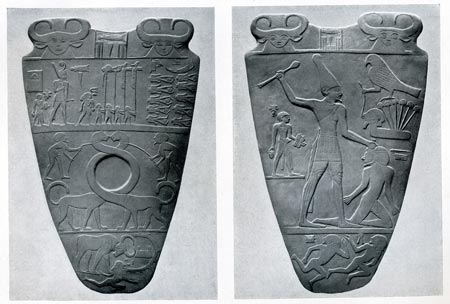
Figure 9: Namer Palette (31st Century BCE), The Smiting side and the the serpopard side. Serpopard is a mythological creature, from the words ‘serpent’ and ‘leopard’. © Ivy Close Images / Alamy.
Palettes were typically used for grinding cosmetics, but this palette is too large, heavy and elaborate for personal use so it is reasonable to consider it a ritual or votive object, specially made for use in a temple. One theory is that it was used to grind pigments to adorn the statues of the gods.
Stoneworking and metalworking
It was also during the Naqada III period that stone working was developed. They worked with increasing skill with limestones, alabasters, marbles, serpentine, basalt, breccias, gneiss, diorite and gabbro.
The Naqada III period also saw the intense working of copper to produce larger tools such as axes and blades, as well as for bracelets and rings. Alongside copper they worked more with gold and silver.
Naqada III saw the development of a class of artisans specialised in producing artefacts for an elite and for religious purposes.
The stage is set for the Classical Egyptian period of art. The skills have developed and many of the embryonic symbolism have been established.
Classical Egyptian art (2920 BCE - 332 CE)
Introduction
Egyptian art comes to the fore from the end of the Naqada III period and like the Naqada there a number of different chronological periods during the time from 2686 BCE - 395 CE: the Old Kingdom, First Intermediate Kingdom, Middle Kingdom, Second Intermediate Kingdom, New Kingdom, Third Intermediate Kingdom, Late Period, Ptolemaic and Roman Period. The Ptolemaic and Roman is often referred to as the Greco-Roman Period.
- What forms of art can we see in the Egyptian period?
Classical Egyptian art is the painting, sculpture, architecture and other arts produced by the civilisation of Ancient Egypt in the lower Nile Valley. In a narrow sense, Ancient Egyptian art refers to the canonical 2nd and 3rd Dynasty art developed in Egypt from 3000 BCE and used until the 2nd century.
Because many of the elements of Egyptian art had been developed over time, the Classical period began with a set of skills that allowed most of Egyptian art to remain remarkably stable over a 3000 year period. This was also possible because there was relatively little outside influence.
The quality of observation and execution started at a high level and remained at that level in painting and sculpture. It was both highly stylised and symbolic. Much of the surviving art comes from tombs and monuments and so there is an emphasis on life after death and the preservation of knowledge of the past. However there are other art forms such as paintings of everyday life.
Portraiture was highly developed, especially that of royalty, representing a complicated mixture of realistic depiction of individuals and stylisation of form.
Colour in Egyptian art was formalised into those for naturalistic paintings (landscapes, daily life and travel stories) and those for religious (funerary and medical art). For naturalistic paintings the artist could mix and superimpose colours at will. In the religious art there was a palette of only six colours, each colour linked to specific symbols and precious metals that meant mixing would render them meaningless. They were used in juxtaposition to each other.
Egyptian art
From the myths of creation we can deduce that the art of the Egyptians served a vastly different purpose than that of later cultures. Generally, the works we see on display in museums were products of royal or elite workshops. These pieces fit best with our aesthetic sense of art. There are other items from the common people but, even here, there is the influence of their beliefs.
To understand Egyptian art one needs to have some idea of the myths of the Ancient Egyptians.
While we marvel at the beautiful treasures in museums, reliefs from New Kingdom tombs, and statues from the Old Kingdom, it is important to remember that the majority of these works were never intended to be seen. These images, statues and reliefs were designed to benefit a divine or deceased recipient. Statuary provided a place for the recipient to manifest and receive the benefit of ritual actions. Reliefs were often instructions or stories for the underworld.
a)  b)
b) 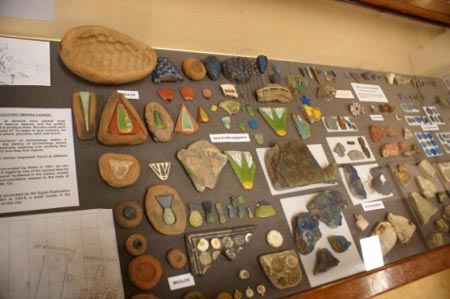
c) 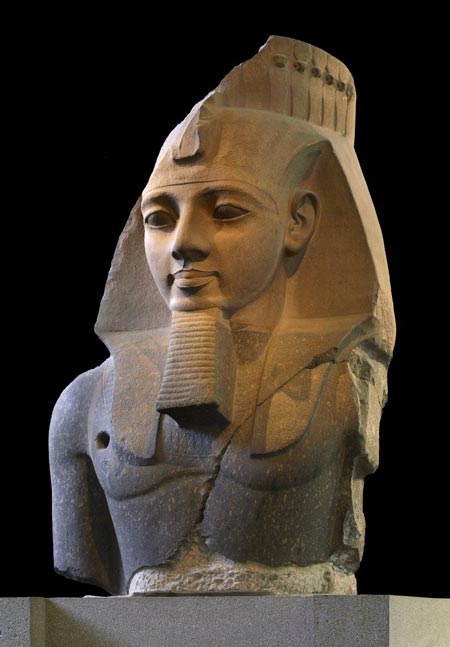
Figure 10: Examples of Egyptian Art: a) reliefs of workmen, b) enamelled tiles, c) Pharoah (Ramses II).
Images courtesy of a) The Petrie Museum of Egyptian Archaeology, b) Pat O’Brien, c) © The Trustees of the British Museum
Many examples of the common people’s art can be seen in museums and there is much stored in museum basements. They are objects made for people of lower status including small statuary, amulets, coffins, and stele that are recognisable. These objects served the exact same function as those made for the elite.
The Egyptians developed many art techniques. For example, before stone could be painted it had to be smoothed and holes filled with plaster. On rock a layer of mud was laid then plastered as the painting surface. They laid out their scenes in a marked off area by gridding the area with squares. This was to help with proportionality of objects. Paint made from a wide range of materials was laid on in flat washes, pigment by pigment, using brushes made from fibrous wood such as palm ribs or twigs bound together.
They used papyrus as a surface for writing, but it became a painting surface in the form of funerary texts known as the Book of the Dead, in which illustrations would figure.
One thing everyone associates with the Ancient Egyptians is the mummy, and the creation myths give us the reason for the funerary rituals and the representation in art of aspects of the myths. The practice of mummification goes back over 5000 years and has a highly specialised art form associated with it.
The mineral natron was used in Egyptian mummification because it absorbs water and behaves as a drying agent. Moreover, when exposed to moisture the carbonate in natron increases pH (raises alkalinity), which creates a hostile environment for bacteria. In some cultures natron was thought to enhance spiritual safety for both the living and the dead.

Figure 11: Base and lid of an anthropoid outer coffin of Seshepenmehyt. © The Trustees of the British Museum
Natron was added to castor oil to make a smokeless fuel, which allowed Egyptian artisans to paint elaborate artworks inside ancient tombs without staining them with soot.
Natron is an ingredient for making a distinct colour called Egyptian blue and as the flux in Egyptian faience. It was used along with sand and lime in ceramic and glass-making by the Romans and others at least until 640 CE. The mineral was also employed as a flux to solder precious metals together.
They used a range of pigments to obtain the colours they wanted and they were responsible for the manufacture of synthetic pigments. Their pigments came mostly from the rocks and for binders they used gum arabic, egg and glue.
They created a ground for painting on by mixing calcite with gum arabic and painting that on to a surface. They painted on many surfaces including walls, statues of stone, wood alabaster, wood boxes, coffins, panels, papyrus and small objects of many materials.
They also developed the use of linen and plaster as a painting medium in the form of cartonnage. Alternate layers of linen and plaster would be built up to form a hard surface. This array of different surfaces or supports required the development of different techniques.
The influence of Egypt’s religion on its art
To understand Egypt, and its art it is important to have some idea of the way the Ancient Egyptians interpreted their world. They developed a world view in which events and conditions were attributed to the actions of multiple, related gods and goddesses.
The Ancient Egyptians’ world view was influenced by their geography, the Nile and its annual flooding and the bountiful harvests the Nile gave the people of the river valley. They interpreted every occurrence in their lives in terms of the relationship between natural and supernatural forces in the following divisions:
Natural - The annual cycle of the river Nile’s flood, the rich fertile banks known as Kemet, the Black Lands, and the enormous size and unchanging harshness of the surrounding desert known as Desheret, the Red Lands. The Nile was, in antiquity, a very predictable river. Until the Aswan High Dam was built, Egypt received a yearly inundation between July and September, a season the Egyptians called akhet meaning inundation.
The swollen Nile would flood its banks and spread black fertile muddy silt on to the land, hence “The Black Land”. Without this black silt the land would be barren. The amount of silt left behind depended on the height of the Nile flood and determined the amount of crops that the Egyptians could grow. If the inundation was too low it would be a year of famine.
Celestial - The daily cycle of the sun’s movement across the sky, that was symbolic of birth, life, death, and rebirth. It was also associated with the movement of the stars and the patterns of the constellations.
The religious beliefs pervaded and ruled over the Ancient Egyptian society and their art. To appreciate this it is useful to understand their view of the link between the natural and celestial world.
Inundation and emergence
Egyptians saw the inundation as a yearly coming of the god Hapy, bringing fertility to the land. They used astronomy to predict and prepare for the inundation. At the time of the inundation the “dog star” (Sirius) rose in the sky and continued to be seen in the night sky during the flood. The time of inundation marked the start of the Egyptian New Year. Ancient Egyptians divided their year into 12 months each of 30 days.
Their dependence upon the Nile proved a precarious existence especially since the climate could not be depended upon, in fact one in five years the flood could be either too high or too low. The Egyptians therefore relied on the star, rather than the season, as the herald of both the New Year and the yearly flood.
After the inundation came emergence, or planting time, around October or November. This was followed by the growing or peret season during which the Egyptians continued to water their crops using an irrigation system of canals using the shaduf to raise water from the river to the banks of the Nile. (The shaduf is still in use in Egypt today). This went on until the Dry time around March or April, which became the harvest or shemu season.
During the inundation there was little for the Egyptian farmer to do, so rather than doing nothing for a whole season the Egyptians would do other tasks in the form of working on building pyramids, temples and tombs. This way they avoided paying tax. Tax was usually taken out of the crops that the farmers grew, and during inundation the farmland was covered by water.
Downloads
Egyptian art
PDF, Size 0.39 mb

















